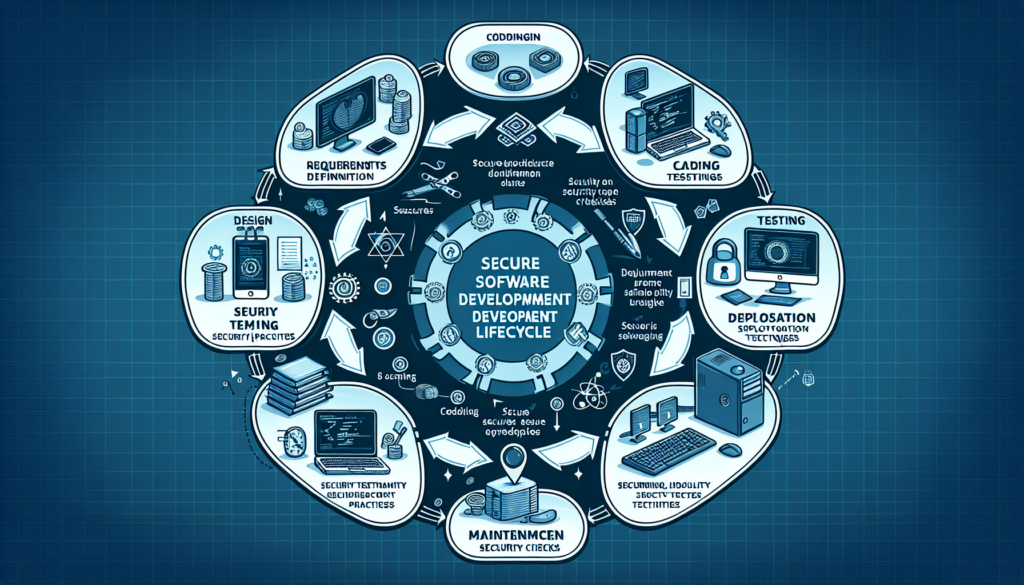The software development life cycle (SDLC) is a process used by software developers to design, develop, and deliver high-quality software. Yet, in today’s landscape, where cyber threats abound and data breaches are rampant, integrating security into this process is more crucial than ever. This is where the Secure Software Development Lifecycle comes into play. It intertwines security practices with traditional development phases to craft software that not only functions well but is also resilient to threats.
What is Secure SDLC?
Secure SDLC is an enhancement to the traditional SDLC framework. It involves embedding security considerations throughout each phase of the development process rather than leaving them as an afterthought. The process is not simply about adding security measures but about making them an integral part of the planning, development, and deployment of software.
Phases of Secure SDLC
Secure SDLC typically follows several phases. Each phase incorporates security measures to ensure that the final product is robust against potential threats. Let’s break down these phases:
1. Planning
Effective security starts in the planning phase. Here, teams identify security requirements alongside functional requirements. This includes risk assessments and defining security goals. Engaging stakeholders early means that security becomes a shared responsibility rather than a checkbox item.
2. Design
During the design phase, architects and developers plan how the software will operate, focusing on security architecture. They identify potential vulnerabilities and design systems to mitigate them. This could involve threat modeling, where teams anticipate potential attack vectors and design safeguards around them.
3. Implementation
In the implementation phase, developers write the actual code. Secure coding practices should be adhered to. This includes input validation, proper authentication, and adherence to security standards. Regular code reviews and pair programming can enhance security during this phase.
4. Testing
Testing is where many security vulnerabilities can be detected. Automated security testing tools should be integrated into the continuous integration/continuous deployment (CI/CD) pipeline. This might involve tools for static code analysis, dynamic analysis, and penetration testing. Identifying and fixing vulnerabilities at this stage is cheaper and easier than after deployment.
5. Deployment
Before deploying the software, teams should conduct a final security review, ensuring all known vulnerabilities have been addressed. Secure deployment practices are essential. This phase might include configuring environments securely, auditing third-party services, and ensuring that deployment scripts do not introduce vulnerabilities.
6. Maintenance
After deployment, the software enters the maintenance phase. This is where ongoing security updates happen. Security patches must be regularly applied, and teams should monitor for new vulnerabilities. Feedback from users can often highlight areas that need improvement, both functionally and security-wise. Security doesn’t end with deployment; it’s an ongoing commitment.
Benefits of Secure SDLC
Incorporating security into the SDLC has several notable benefits:
- Early Detection of Vulnerabilities: By addressing security early in the process, organizations can identify threats before they evolve into problems.
- Cost-Effective: Fixing a vulnerability during the planning or design phase is much cheaper than addressing it post-deployment.
- Regulatory Compliance: Many industries require compliance with specific security standards. Secure SDLC helps organizations meet these regulations.
- Improved Reputation: Delivering secure software builds trust with users, enhancing the company’s reputation.
Challenges in Implementing Secure SDLC
While beneficial, implementing Secure SDLC is not without challenges:
- Resource Allocation: Integrating security into every phase requires time and resources, which can be a barrier for some organizations.
- Cultural Change: Transitioning to a Secure SDLC approach often requires a significant shift in mindset and workflow across teams.
- Skill Gap: Individuals may require additional training to understand security best practices and threats. This can hinder effective implementation.
Best Practices for Secure SDLC
To navigate these challenges and enhance the security of the SDLC process, consider adopting the following best practices:
- Training: Regularly provide training for developers and stakeholders on secure coding and compliance.
- Collaboration: Foster a culture of collaboration between development, security, and operations teams. Using tools that promote visibility can help break down silos.
- Continuous Improvement: Collect data and learn from each project. Regularly review and refine processes based on findings.
- Automation: Automate as many security tests as possible within the CI/CD pipeline to ensure security is a continuous rather than a one-time action.
Conclusion
In a digital world fraught with vulnerabilities and threats, the Secure Software Development Lifecycle is not merely an option—it is a necessity. By embedding security into every phase of software development, organizations can deliver products that not only meet user needs but also withstand the tests of increasingly sophisticated cyber threats. Integrating security into the SDLC is about more than just compliance or risk management; it’s about building a culture where secure software is the norm, ensuring stakeholder trust and safeguarding sensitive information.

